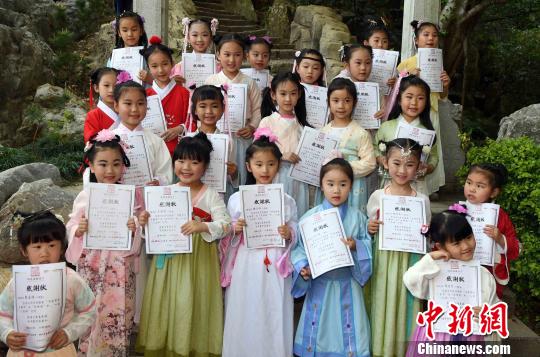 |
|
Children dressed in traditional hanfu clothing show their certificates at the Flower Festival cultural event held at West Lake Park in Fuzhou, East China’s Fujian province, March 31, 2018. [Photo/chinanews.com] |
Hua Zhao Jie, the counterpart of the Mid-Autumn Festival, has a history of over 2,000 years. As the climate varies in the vast Chinese land, people would hold celebrations on the second, the 12th, or the 15th day of February in the Chinese lunar calendar.
According to ancient beliefs, the flower goddess controlled the reproduction of mankind. Due to the primitive lifestyle and agriculture-dominated economy, people held that the more people a family has, the merrier. Thus, it later became a custom to celebrate the birthday of the flower goddess for prosperity.
During the festival, apart from worshipping the flower goddess, people would go on a nature outing and admire the flowers in full blossom. Girls would attach paper in all colors to the flowering branches and farmers would air crop seeds to pray for a bumper harvest while poets would write poems for this beautiful festival.
Yang Xiaoyu contributed to the story.